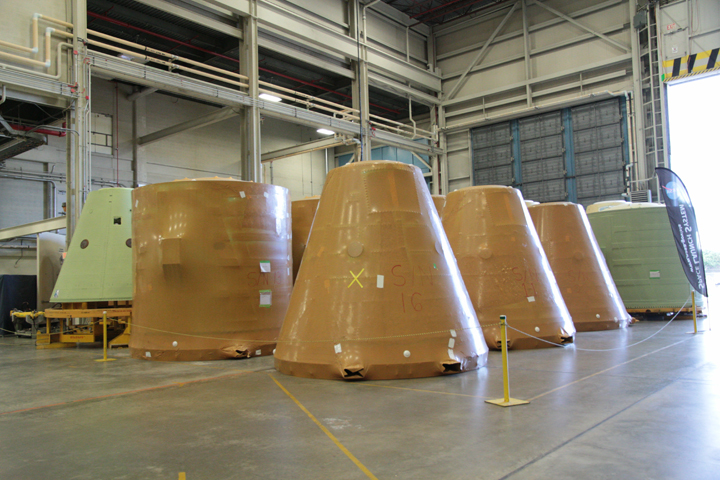WATCH ABOVE: Global News’ Nicole Mortillaro walks through what will happen when the Orion spacecraft launches on Thursday.

The building’s size is difficult to explain: the exterior looks big, but inside it’s a cavern.
The VAB is the tallest single-storey building in the world. But its one storey is equivalent to more than 50 storeys.
The VAB has housed the Saturn V rocket that launched men on their way to the moon. It inspired a nation as part of the Apollo program.

Get daily National news
Though the dreams of living and working in space were put on hold, there is a renewed call to send humans to space, and not just low-Earth orbit. And this is where Orion and the new Space Launch System — which will be the rocket to take humans into deep space — will eventually be mated.
WATCH: Charles Bolden, current Administrator of NASA and former astronaut, talks about this exciting new step for NASA
Recycled rockets
There may not be a shuttle program anymore, but the Kennedy Space Center is a hub of activity. The sun has barely poked out above the rising and falling waves of the Atlantic Ocean and lines of cars are already snaking along the roads heading toward the grounds that house numerous NASA facilities.
The Booster Fabrication Facility is another location that is busy at work preparing for the Orion program.
It’s a sort of giant rocket recycling plant. Here, the solid rocket boosters that once flew aboard the shuttle missions (the most any one rocket flew was 12 times) are being readied for Orion.
- Northern lights set to shine in parts of Canada this weekend. Here’s where
- Hurricane Helene claims lives of Georgia mother and her one-month-old twins
- Tropical Storm Milton forms in Gulf of Mexico, could intensify as a hurricane threatening Florida
- Imperial Oil to pay hefty fine for 2021 oil spill that sickened residents
Because SLS will be much larger and heavier than the shuttle, many modifications are being made, including adding another segment. Though they only fly for about 2 minutes, these rockets are an important piece of the program — they will provide about 90 per cent of the thrust at liftoff.
But unlike the shuttle mission, these solid rocket boosters won’t be reusable. They will drop off into the ocean, and sink to their watery graveyard.
The mobile launcher
The mobile launcher, a sort of backbone to the SLS, is where the rocket and spacecraft sit at liftoff.
This massive structure isn’t being built from scratch, but rather is another “repurposing” of leftover gear from the days of the shuttle.
Sounds of hammering and metal being cut ring out across the grounds as workers ready the system for its new, much heavier visitor. At the moment, it weighs 7 million lbs. When all is said and done it will weigh anywhere between 8 to 10 million lbs, depending on configuration. The cost of the modification: $30 million.
No one said getting us into space would be cheap.









Comments